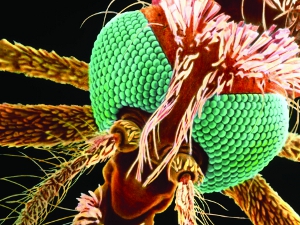Insect control: Oxitec

Technology to control pests and invasive species including mosquitos.
Insects spread human and livestock diseases and ravage agricultural crops, contributing to food shortages in the developing world.
Current methods of control rely on pesticides, which are cheap but have serious environmental consequences, harming many other species including humans. The sterile insect technique has been used with some success: large numbers of the target pest are bred, irradiated to render them sterile, then released to compete with the wild population, reducing their numbers.
However this is expensive, has limited effectiveness since irradiation weakens them and cannot be used for all insects, most importantly mosquitoes.
Oxitec was spun out of the University by Oxford University Innovation, in 2002, based on technology developed by Luke Alphey and colleagues in the Department of Zoology.
The company is developing proprietary insect strains, including mosquitoes, which are bred so that their offspring die before reproducing, reducing the size of the disease-carrying population. This approach is just as targeted as the sterile insect technique, but has the advantage of being more affordable, effective and applicable to a wider range of pests.
The company was named a World Economic Forum technology pioneer in 2008 and has been recognised by the Bill and Melinda Gates Foundation ‘Grand Challenges for Global Health Initiative’ as part of a consortium awarded $20 million to develop genetic strategies to control disease carrying mosquitoes.
Field trials of mosquito strains have been conducted in the Cayman Islands, Malaysia and Brazil with great success. Oxitec are currently developing new proprietary strains targeting other important agricultural and disease-carrying insects, but the technology has the potential to control a very wide range of pest and invasive species, even beyond insects.

